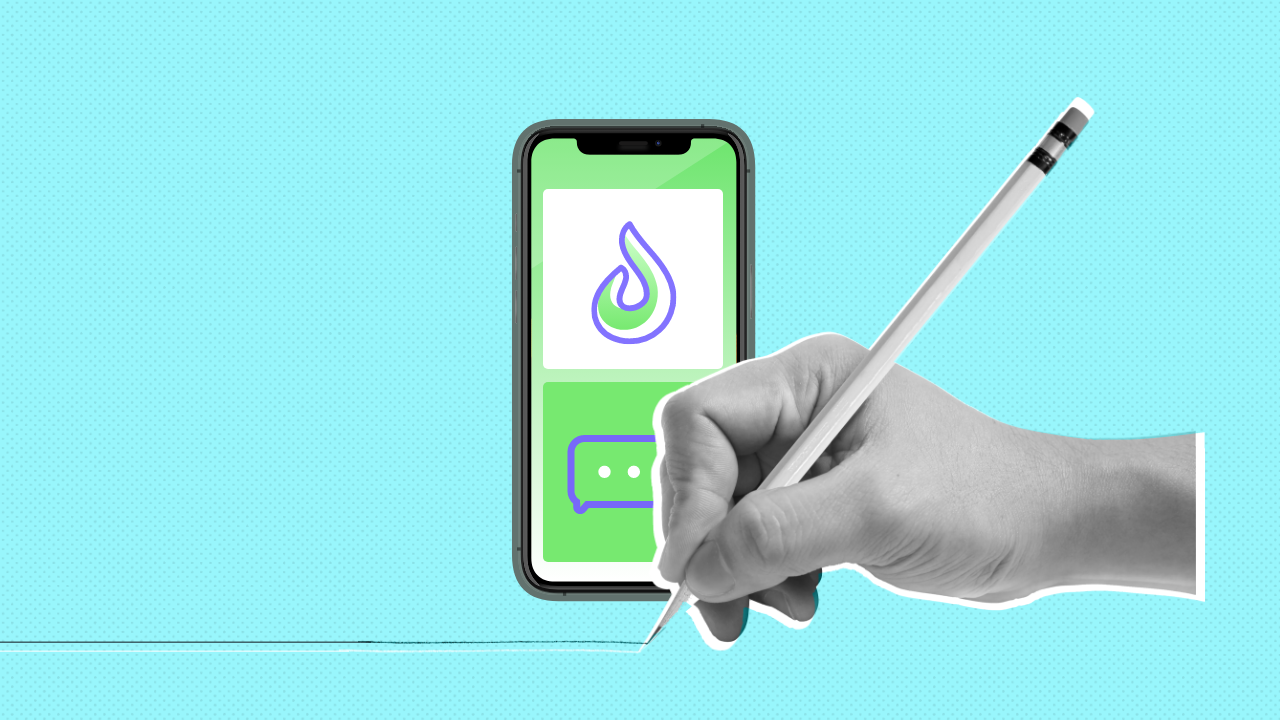If you’re creating a brand or changing the one you have, it’s important to understand your identity and how to express it clearly. Your brand voice is a crucial aspect of your brand identity, as it can greatly impact how people perceive you based on the way you speak.
To make your brand appealing and showcase your personality, it’s crucial to know your brand’s voice and how to utilize it. Additionally, ensure that everyone producing content for your brand is well-versed in it.
Identifying your brand voice can be a challenging task. It involves introspection and a thorough understanding of your brand. However, there are a few strategies that can simplify the process.
Ready to get serious. Download the Brand Identity Toolkit.
What Is a Brand Voice?
Your brand’s voice is how you express your brand’s personality through written and spoken communications.
Why Do You Need a Brand Voice?
Defining and maintaining a brand voice is an essential aspect of establishing a distinctive brand identity. This, in turn, plays a critical role in achieving two key goals.
- Differentiate from your competition: Having a strong brand identity makes it easier to differentiate yourself from competitors. By having a clear brand voice, you can attract attention and increase engagement with your brand.
- Connect with the right people: People interacting with other people rather than generic corporations. Even if your brand doesn’t represent a single individual, having a strong brand voice can help you create an emotional connection with your audience. Your brand voice could be demonstrated through humorous tweets or approachable explainer videos, and it’s an effective method for showcasing your brand’s personality.
Tl;dr: If you create any kind of content as a brand, it’s important to have a consistent and coherent voice for your interactions with the world.

Great Brand Voice Examples
The best brands in the world have a consistent and unique voice that is present across all their communication channels. This includes their packaging, website, and social media accounts like Twitter. Here are some examples of brands that have been successful in maintaining their brand voice from the beginning.
1) Wendys
What makes Wendy’s Twitter so successful? It’s the consistency, creativity, and wit with which it is run. Wendy’s has created a brand voice that is unique and authentic, adding to conversations in a humorous manner that resonates with audiences.
2) JetBlue
Flying is stressful. Just ask anyone who has run through a terminal to catch a connecting flight or remove their belt, shoes, and jacket, only to set off the metal detector at security.
And in this high-stress, often uncomfortable environment, one brand manages to stand out on Twitter: JetBlue.
3) Starbucks
The Starbucks’ social media account team is highly skilled at portraying the brand’s confidence without venturing into arrogance. For such a massive corporation, Starbucks’ Twitter account does a remarkable job of coming across as friendly and approachable.
What Do You Need to Find Your Brand Voice?
Before diving into brand voice brainstorming, it’s important for brands to consider the bigger picture and how their brand voice aligns with their overall goals. Choosing a brand voice should not be a spontaneous decision. It requires a thorough understanding of the brand’s identity and objectives. Thus, before convening with your team, make sure you have established the fundamentals of your brand strategy.
1) Your Brand Soul
Your brand Soul is an articulation of your core beliefs, specifically your:
- Purpose: Why do you exist?
- Vision: What future do you want to help create?
- Mission: How do you create that future?
- Values: Who are you? How do you work?
Your brand voice is a tool used to express the core of who you are. For instance, if your organic meat brand focuses on producing non-GMO meats and being an advocate for the humane treatment of animals, then a snarky or sarcastic brand voice may not be the best choice.
To find your Brand Soul download our free workbook.
2) Personas
To clarify your target audience, creating personas can be helpful. Check out our guide.
3) Competitive Analysis
To avoid sounding like your competitors, it’s crucial to identify your rivals and understand how you can stand out from them. If you haven’t done a competitive analysis yet, check out our article: How to do a Competitive Analysis
Once you have a deep understanding of your brand at it’s core, you can start to think about how to express it through your brand voice.
How to Find Your Brand Voice (5 Ways)
Identifying and sharing your brand voice may feel overwhelming, but it’s actually not a difficult task. Your brand voice already exists, and you simply need to discover and express it. To start this process, how do you begin and what steps should you take?
There are many tactics available for brands to find their voice. Despite some being a lengthy process, most don’t require extensive digging. The process can actually be enjoyable and positive.
We recommend avoiding a single brainstorming session where everyone shares their opinions, as this can often lead to chaos. Instead, we suggest beginning the process with some structured conversations. The provided questions, tips, and exercises can be used over time to assist with the process. As you begin, keep in mind:
- It is important to have all necessary participants in the room, including the brand team, founder, and other important stakeholders. Even though there may be differing opinions, the group should strive to reach a consensus that satisfies everyone.
- Assign someone to take charge of the discussion and gather feedback.
- Getting answers from a larger group of people, such as a 30-person department, can be helpful. It is recommended to obtain these answers before starting the focused brainstorming sessions.
During the process, pay attention not only to the words spoken by the people in the room, but also to their tone, phrases, vocabulary, and so on. Their speech style, whether light-hearted or serious, can provide clues about your brand voice. If you’re prepared to find your brand voice, follow these steps.
1) Answer Your Brand Voice Questionnaire
You can begin the process by downloading the Brand Voice Questionnaire for free. You have the option to print, email, or share the questionnaire with your team.
Use these thoughtful questions as a guide to help you identify your identity and practice how to articulate it during conversations.
1. When people interact with our brand, how do we want them to feel?
To determine the emotional experience you want your brand to provide, ask yourself a big-picture question and use your brand voice to cultivate it. Consider how your product or service solves problems or improves people’s lives, and let that guide your voice. For instance, if you’re a security company striving to be seen as a trustworthy guardian, your voice should exude confidence and reassurance.
2. What adjectives would we use to describe our brand?
We recommend selecting 3-5 descriptive words that represent your brand. For instance, a toy company could use “playful,” “silly,” and “adventurous.” This approach can help identify your brand’s voice characteristics, and you can ask a larger group for input to see if there are any recurring themes or descriptions.
3. What does our competition sound like/how can we differentiate?
If you notice that your competitors in the same industry are all sounding similar or following a particular trend or image, this can be an advantageous opportunity for you to distinguish yourself. (For instance, a few years ago, many companies tried to imitate the character of Dos Equis’ Most Interesting Man in the World, but that approach may be suitable for a beer company but not for a bakery.)
4. What is another brand with a voice we love?
You might come across people from different industries or your own field. While you should avoid copying them, take a moment to reflect on why their voice speaks to you and what you can learn from them. Think about how you can evoke a similar emotion in your own work.
5. If our brand were a celebrity, who would we be?
It is not necessary to choose only one person. You can use a combination of traits from different people. For instance, a fun, yet sophisticated dishware collection brand may describe themselves as Jennifer Gardner.
6. How do we want to talk about ourselves?
Consider examining the language and phrases you use to describe yourself and your business in order to define and refine your brand voice. What type of vocabulary do you typically employ, and what phrases do you frequently repeat?.
7. Who do we NOT want to be/what do we want to avoid?
It’s equally important to know who you are not as it is to know who you are. Do you have any despised phrases, buzzwords, or brands? Avoiding them can help you maintain your authenticity. As an instance, in the web development industry, the term “Full-stack” has become too common and no longer holds any meaning.
2) Think About Your Personas
People from different groups have unique ways of communicating. The language used by a tween is not the same as that used by a baby boomer. Similarly, a coffee brand speaks differently from a Safety Apparel Company. To find your own voice, it is important to consider your audience.
To effectively communicate with your target audience, it’s important to maintain authenticity and genuineness in your brand. Take time to understand their communication style, the words they use, their challenges, and how they express themselves. Additionally, consider their reading habits, social media feeds, and sense of humor to adopt a voice that resonates with them.
3) Quiz Your Team
Obtain feedback from a wide range of individuals about your brand voice, including personnel from various levels such as a junior-level accountant and the company founder. Once the feedback is collected, identify common words or themes that are used to describe your brand voice.
Completing this exercise will reveal the similarities and differences in how people perceive your brand. If there are significant differences in opinion, it may be a sign that your branding needs improvement. This could mean that your employees are unclear about your brand identity, purpose, or mission.
4) Review Your Own Content
Sometimes we think too hard about who we want to be, when we should just focus on who we are. Take a deep dive into the content you’ve created to examine the way you currently communicate.
Take a look at your recent online content such as your last 20 tweets, blog posts, sales materials, and newsletters. Analyze your overall content to discover recurring themes. For example, do your newsletter subject lines and tweets share a similar playful tone? Does your blog content consistently offer useful advice? Identifying these common threads can provide valuable insights to help you refine your writing style.
5) Try a Generator
You can use Portent’s brand voice generator to find your unique writing style and get inspiration if you’re feeling tired or stuck. The tool is interactive, and you will be asked a series of questions that will help you discover your voice. The generator also provides examples of copy that match your style once you complete the questions.
This message is a starting point to discuss your brand voice or to determine what your brand voice is not. However, it is not the final answer.
How to Complete Your Brand Identity
Once you’ve identified and articulated your brand voice, make sure every aspect of your brand is aligned and cohesive. Your goal is to build a comprehensive identity that allows any and all content creators to create high-quality, on-brand content.
But if you’re still having trouble figuring out what to say and how to say it at any stage of the process, hit us up. We’d love to help you untangle it.




Leave a Comment